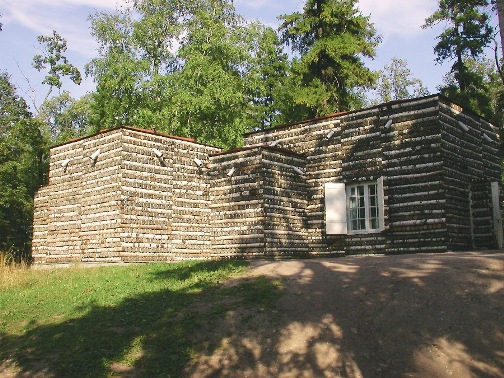Birch House

Designed by the Swiss court architect Francois Viollier, the Birch House was erected in the mid- 1780s, and from the outside it resembled a pile of birch logs that were stored for a long winter. It was conceived as a joke, an 18th century pastoral caprice, as its plain-looking facades disguised the magnificent and sumptuous interior. Wall painting, gilded plaster work, and an abundance of mirrors gave this interior a particularly spectacular appearance. The contrast between the simple outer covering of the house and its exquisite interior never failed to astonish guests who encountered the “surprise-house” as they walked about the park.
In 1796, a monumental gateway that screened the Birch House, the Portal Mask, was constructed under the guidance of architect Vincenzo Brenna. In the second half of 1790s, a stone gateway was erected at the eastern end of the Palace Park. It was called the Birch Gate, named after the Birch House located nearby.

Designed by the Swiss court architect Francois Viollier, the Birch House was erected in the mid- 1780s, and from the outside it resembled a pile of birch logs that were stored for a long winter. It was conceived as a joke, an 18th century pastoral caprice, as its plain-looking facades disguised the magnificent and sumptuous interior. Wall painting, gilded plaster work, and an abundance of mirrors gave this interior a particularly spectacular appearance. The contrast between the simple outer covering of the house and its exquisite interior never failed to astonish guests who encountered the “surprise-house” as they walked about the park.
In 1796, a monumental gateway that screened the Birch House, the Portal Mask, was constructed under the guidance of architect Vincenzo Brenna. In the second half of 1790s, a stone gateway was erected at the eastern end of the Palace Park. It was called the Birch Gate, named after the Birch House located nearby.
